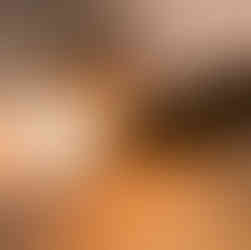Have a Closer Look: A Focus on Patterns and Textures Found in Nature
- Jennifer Dixon

- Jun 19, 2023
- 3 min read
One of the most mesmerizing aspects of the natural world to explore is the intricate patterns and textures that abound in nature. From the delicate veins of a leaf to the rugged surface of a tree bark, there's an entire universe of tiny details waiting to be captured through the lens. Welcome to the captivating world of macro photography!
Let's have a Closer Look
If you're a beginner photographer or simply shoot another genre the majority of the time, you might wonder why you should delve into macro photography. Well, it's simple - it allows you to unveil the hidden beauty that often goes unnoticed by the naked eye. Nature's textures are a playground for your camera, and once you start noticing them, you'll see the world in a whole new light.
Patience is Key: First things first, patience is your best friend in macro photography. You'll need to spend time observing, waiting for the right moment, and being mindful of every detail. This genre of photography is like a slow dance with nature, and the more patient you are, the more rewards you'll reap.
Getting Up Close and Personal: Macro photography is all about getting up close and personal with your subjects. You'll need to get as close as possible while maintaining focus and sharpness. This requires the right gear.
Essential Gear for Macro Photography
Macro Lens: The most crucial piece of equipment for macro photography is a dedicated macro lens. These lenses are designed to capture tiny details with exceptional clarity. A 100mm macro lens is a good starting point, but there are other focal lengths available to suit your needs.
Extension Tubes: If you're on a budget, extension tubes can be a cost-effective way to get closer to your subjects. These tubes fit between your camera body and lens, effectively decreasing the minimum focusing distance.Tripod: As you get closer to your subjects, even the tiniest camera movement can result in blurriness. A sturdy tripod is essential to keep your shots sharp and steady.
Remote Shutter Release: To eliminate any chance of camera shake while pressing the shutter button, consider investing in a remote shutter release. This nifty accessory allows you to take pictures without physically touching the camera.
Ring Flash or Macro Flash: Lighting is critical in macro photography. A ring flash or macro flash can help illuminate your subject evenly and reduce harsh shadows.
Tripod: As you get closer to your subjects and they're not moving around that much, like a vase of flowers inside out of the wind - because even the tiniest camera movement can result in blurriness, a sturdy tripod can help keep your shots sharp and steady.
Finding Textures in Nature
Now that you know about the gear, it's time to explore the world of textures in nature. Here are some subjects you might encounter:
Leaves: Look closely at the leaves of plants and trees. You'll find intricate vein patterns, water droplets after rain, and even tiny insects that call these leaves home.
Flowers: The world of macro photography opens up a whole new world of beauty within flowers. Capture the velvety texture of petals, the intricate details of a stamen or the rough textures of a dried bloom past its prime.
Insects: Macro photography is a fantastic way to explore the world of insects. From butterflies to ants, you can capture their tiny features in stunning detail.


Bark: Tree bark can be surprisingly diverse in texture. Get up close to capture the rugged, weathered surfaces that tell the story of a tree's life.

Stones: Even the most ordinary pebble can become a work of art in macro photography. Explore the colors, patterns, and textures of stones found by riversides or on the beach.
Feathers: The delicate beauty of feathers is another mesmerizing subject. Capture the fine details, patterns, and iridescence left for us to find from our feathered friends.

The Allure of Macro Photography
By slowing down and allowing yourself to have a closer look, the textures and patterns are an endless source of inspiration for photographers. With the right gear and a patient, observant eye, you can embark on a fascinating journey into the miniature world that surrounds us. Remember, "practice makes it better", there is no "perfect" in photography, so don't be discouraged if your early attempts don't meet your expectations. Keep experimenting, learning and exploring, and you'll soon find yourself capturing breathtaking textures and patterns in the natural world. Happy shooting!






















Comments